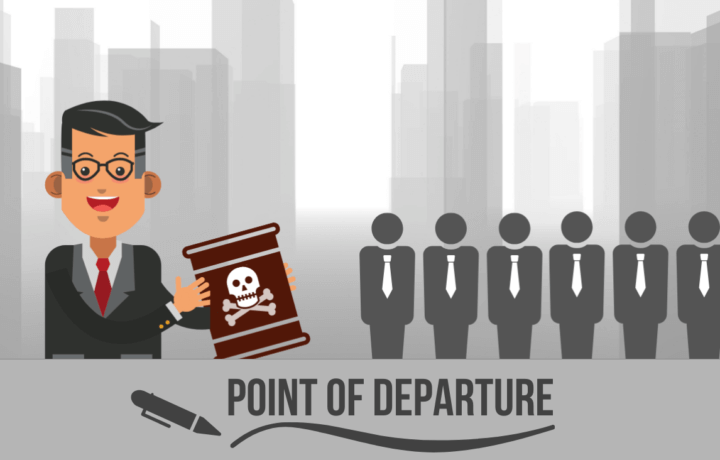Toxic leadership is a subject that always seems to bubble to the surface of any serious conversation of the practical side of leading. Even as we focus on the positive attributes that characterize good leadership, the bad will insert itself into the discussion. If you’re talking about living the professional values of an organization, someone will certainly want to share an anecdote about somebody who refused to conform to those standards. When you’re discussing the importance of leading by example, you can count on a story about someone who said one thing and did another. And any conversation on the need to ensure the wellbeing of your workforce will end with a long discourse on those who systematically abuse and abandon their subordinates on their own road to success.
How do Toxic Leaders Get Followers
Rarely, however, do we talk about their followers. If toxic leaders are as bad as we think, how do they manage to attract so many followers? In her book, The Allure of Toxic Leaders: Why We Follow Destructive Bosses and Corrupt Politicians—and How We Can Survive Them, author Jean Lipman-Blumen explains the paradox of toxic leadership: “Toxic leaders cast their spell broadly. Most of us claim we abhor them. Yet we frequently follow—or at least tolerate—them.” Despite this, toxic leaders tend to attract enthusiastic, sometimes fanatical followings, even after revealing their true nature. Why?
Common Characteristics of Toxic Leaders
Toxic leaders all share some common characteristics. They tend to be incredibly confident and charismatic, and they draw in their followers so closely that even the most blindingly obvious faults are either ignored or dismissed outright. The most devoted followers of toxic leaders are practically disciples; together, they form a disturbing and dangerous cult of personality that defies reason.
Confidence
For a toxic leader, confidence is absolutely critical. Research has long shown that confidence is magnetic; it attracts followers unlike any other leadership characteristic. Like a moth to a flame, followers flock to the display of hubris and overconfidence exhibited by a toxic leader. In a group setting, a toxic leader’s confidence—especially overconfidence—tends to be misinterpreted as competence. In turn, this earns them undeserved status, respect, and admiration among the group. Even when followers later realize that the confidence—and inferred competence—of a toxic leader was severely misplaced, rarely do they challenge the status conferred upon them.
Charisma
But confidence only opens the door. If confidence is magnetic, then charisma is downright addictive. Like a gateway drug, it’s dangerously habit forming; followers crave the charisma of a toxic leader. Writing in a 2012 Harvard Business Review article, psychologist Tomas Chamorro-Premuzic described four dangerous effects of toxic charisma: it dilutes judgment, is deeply addictive, disguises psychopathy, and fosters collective narcissism. Charisma is perilously seductive, and toxic leaders wield it cleverly to surround themselves with impassioned—and fervently devoted—followers.
Manipulation
Charisma by itself is not necessarily toxic. But toxic leaders ruthlessly brandish their charm to manipulate others, clouding their judgment and leaving them increasingly susceptible to their control. When followers don’t feel that rush of charisma, their emotions, critical reasoning, and survival instincts fail them. Like drug addicts, followers yearn for that surge of adrenaline. Toxic leaders inherently recognize this; they extend and withhold their charm as a control mechanism over their compulsive and dependent followings.
Psychopathy
Charisma can also be a convenient disguise for psychopathy. Beneath a thin veneer of charm lurks a profoundly antisocial—and increasingly unstable—personality. The merest nudge from the wrong subordinate can send them spiraling out of control. It’s no accident that the characteristics of a psychopath—manipulation, corruption, hypocrisy, and narcissism—are also common among toxic leaders. They view followers as objects to exploit for their personal gain. Any seemingly altruistic intentions are actually transactional in nature and reflect an exceptional skill most toxic leaders possess: mimicry. Like psychopaths, toxic leaders use mimicry to imitate behavioral norms and appear compliant with the values and ethics that govern most professions.
Narcissism
Despite all of this, the tie that binds the toxic leader-follower relationship is collective narcissism. No one knows their followers quite as well as a toxic leader. Followers are carefully selected and cultivated, and toxic leaders attract their most loyal, devoted followers through a shared love of self. This is the nexus of the cult of personality, where raw ambition combines with moral ambiguity in the pursuit of common self-interests. Despite being manipulated, mistreated, undermined, and ultimately left to fend for themselves, followers see the toxic leader as an avenue to their own success. Their success as inherently tied to his success; his failure is their failure.
Kool-Aid Drinking Inner Circle
On the surface, the complexity of the toxic leader-follower relationship can appear confounding; peel away the epidermis, however, and the consequences described by Chamorro-Premuzic are laid bare. Nowhere is this more evident than in “the circle of trust.” The most devout followers—the inner circle—are also the last line of defense for a toxic leader. The bonds that tie them to the toxic leader run deep. There are no limits to the lengths they will go to defend and protect their base of power. They recognize that if the toxic leader falls, they fall with him; they stand to lose just as much. Because of this, they will readily collude, tirelessly defend, and zealously stand in defense of their toxic leader.
Sometimes we forget that the euphemism “drink the Kool-Aid” is an especially dark reference to the mass murder-suicide let by cult leader Jim Jones and his Peoples Temple. It’s also an apt reminder that when something—or someone—seems too good to be true, it might be a good time to listen to your instincts. The presence of confidence and charisma are not always indicative of toxic leadership. But, in the hands of the wrong leader, they cast an alluring and dangerous spell. Together, they can destroy an organization from within, crush the spirit of people within, and leave nothing but chaos and destruction in their wake.




